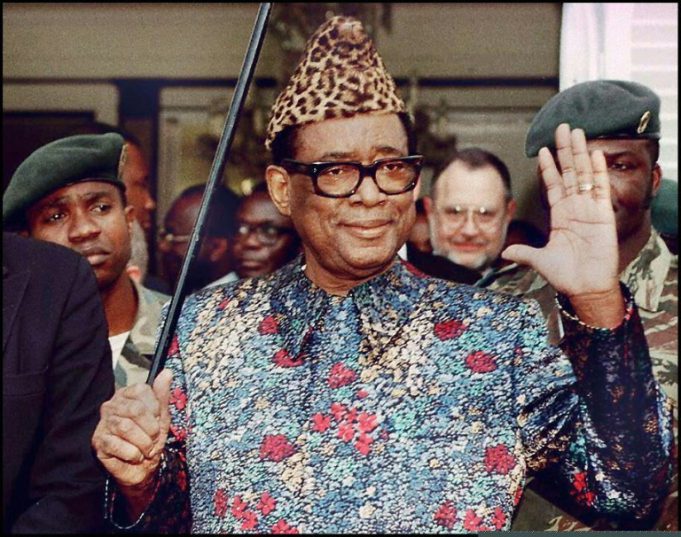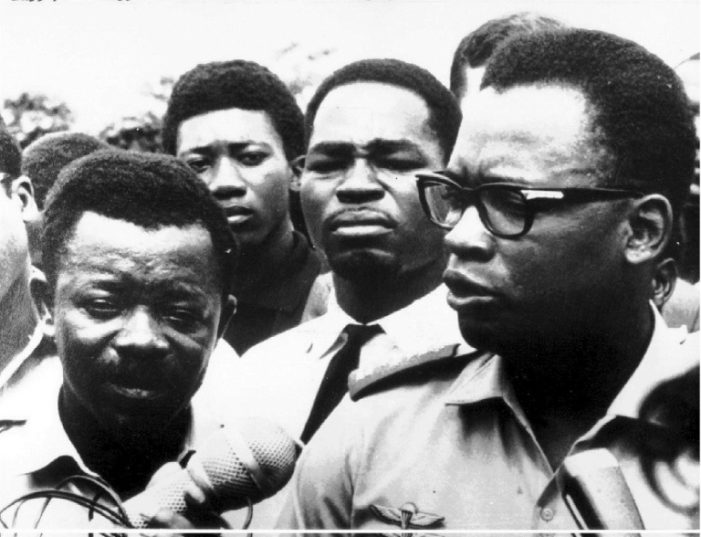Pregnant former child star Sophie Nyweide (24) found dead in the woods
The late dictator of the vast African country, renamed Democratic Republic of Congo after his overthrow, is buried in the European cemetery of the Moroccan capital without the fanfare associated with Mobutu during his rule.
“A lot of people come to visit the tomb. There are at least a dozen every day,” many of them from Congo, said Abu Fida, the cemetery’s caretaker.
“Mobutu is the star of the cemetery!” he said with a smile.
Behind tall white walls, the cemetery is a mix of half-finished tombs and rows of military graves dating back to Morocco under European colonial rule.
Palm trees stand guard before Mobutu’s black-and-white marble grave with its iron grill door and cross on top. No name, photo or epitaph can be seen.

Mobutu Sese Seko, seen here in 1997, was known for his signature leopard-skin hats
Two Congolese nuns were seen quietly praying in front of the tomb of the former military ruler. “He was our president after all,” one of them confided.
Abu Fida said two of Mobutu’s sons were buried alongside him, while three spaces remained in the family grave, which is kept in immaculate condition by cemetery cleaners.
A small chapel inside is locked, containing “personal things… taken care of by mama”, said the caretaker, referring to Mobutu’s wife who visits twice a week and is “very nice”.
Bobi Ladawa was the legitimate wife of Mobutu, who took her twin sister, Kosia, as his concubine.
The two remained his final companions, following him into exile. Today, as heads of the Mobutu clan, they reportedly divide their time between Rabat, Paris, Brussels and Portugal.
– ‘Multi-billion dollar fortune’ –
General Joseph-Desire Mobutu staged a coup in the former Belgian colony in 1965. He renamed the country Zaire and himself Mobutu Sese Seko.

Mobutu Sese Seko, then Congolese army chief, talks to reporters in the capital in November 1965 after seizing power
He set up a dictatorial kleptocracy that lasted 32 years, during which the strongman with signature leopard-skin hats allegedly amassed a multi-billion dollar fortune.
The end came in May 1997 when he was toppled by rebel leader Laurent Kabila with the support of Rwanda and Uganda.
Abandoned by allies, deserted by his generals and despised by his people, he fled first to Togo before taking refuge in Morocco with his old friend King Hassan II.
After being hospitalised with prostate cancer, Mobutu died on September 7, 1997 at the age of 66.
Exactly two decades on and Mobutu’s bones remain buried far from the land of his ancestors.
“For the Congolese authorities, the body of president Mobutu should not remain in Morocco. It should be repatriated,” the Kinshasa government’s spokesman, Lambert Mende, told AFP.
“But there’s an internal row within the family. The government cannot undertake anything in this matter without the family.”
As for the Mobutu family, which shuns the media, there has been no word on any reburial plan or of any 20th anniversary memorial.
Download our app